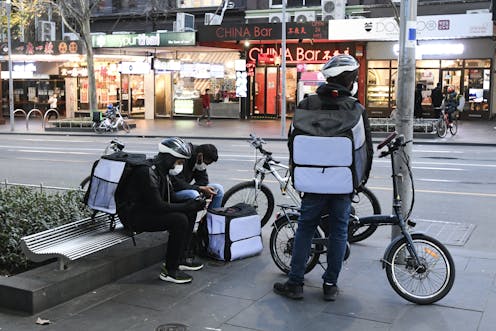Why insecure work is finally being recognised as a health hazard for some Australians
- Written by Alexis Vassiley, Research Associate, Centre for Work and Wellbeing, Edith Cowan University

About 3 million Australian workers lack job security. An estimated 2.4 million[1] – 20% to 25% of the total workforce – are casual workers, with no paid leave entitlements. A further 500,000[2] are on fixed-term contracts.
Whether you are labourer engaged by a labour hire company, a checkout operator, a ride-share driver or a university lecturer on a casual contract, job insecurity can harm both your physical and mental health.
In an Australian first, Western Australia has formally recognised this in its new Code of Practice on Psychosocial Hazards in the Workplace, which provides practical guidance on how WA workplaces can comply with their duties under the state’s Occupational Safety and Health Act 1984[3][4]
A psychosocial hazard refers to any social and organisational factor with the potential to cause psychological or physical harm. In terms of work, it’s anything in the design or management of work that can cause stress.
Better recognition of such hazards was recommended in 2018 by the Boland Review[5] into the “model” laws, regulations and codes that underpin uniformity between Australia’s state and territory work health and safety regimes.
Australia’s federal, state and territory ministers agreed to this recommendation in May 2021. Since then, most states and territories have updated their regulations or compliance codes.
Western Australia is the only one so far to include insecure work. It’s a step in the right direction. For real progress, though, all states and territories need to follow suit – and then follow up with laws to safeguard more secure work.
What are psychosocial hazards at work?
The World Health Organization lists ten psychosocial hazards at work[6]. These cover issues including high uncertainty in job content, lack of control, lack of support and job uncertainty.
Exposure to such hazards over a prolonged time increases the risk of acute and severe mental or physical injury.







